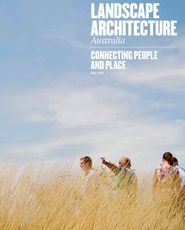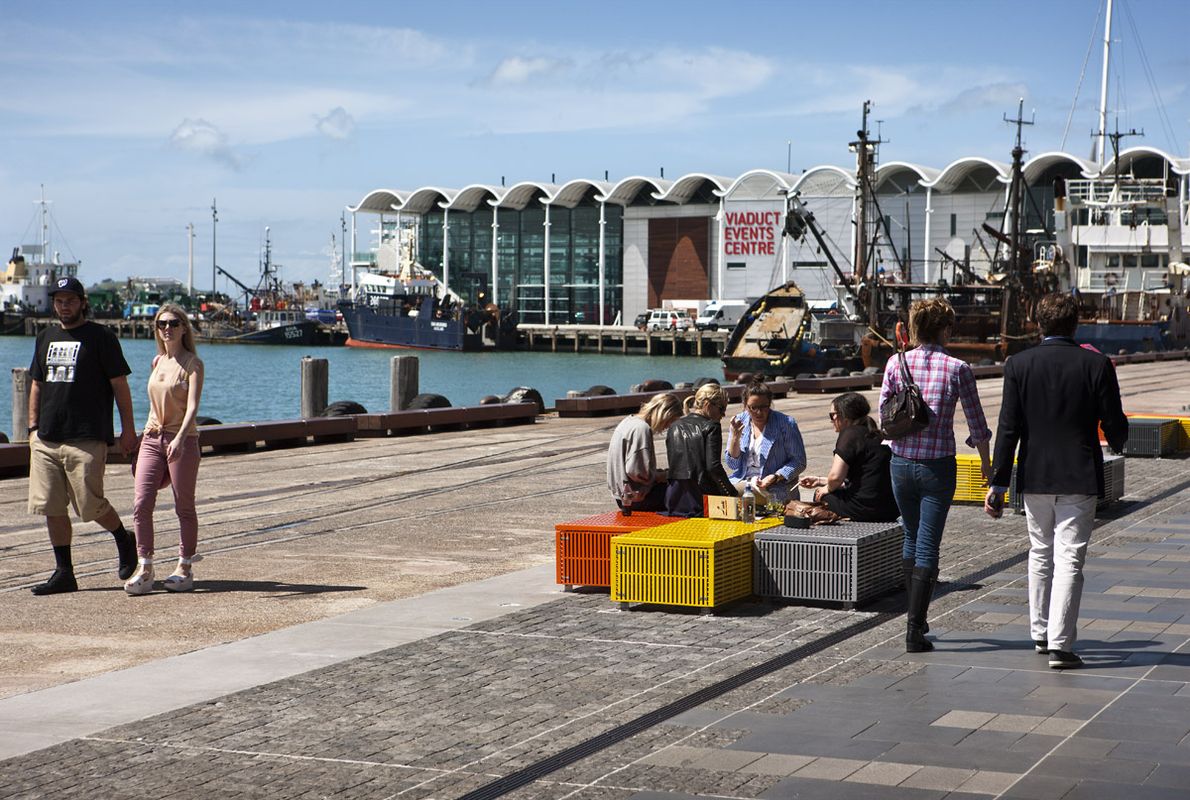In April 2013, the 50th International Federation of Landscape Architects (IFLA) World Congress was held in New Zealand. The event being held so close to home allowed half the staff from Taylor Cullity Lethlean to travel to Auckland to participate, along with more than five hundred other delegates from around the world.
The congress was held at the SkyCity Convention Centre, at the topographic high point of Auckland’s CBD. The venue was within walking distance of hotel accommodation and much of the recent urban design work completed in the city’s CBD and at its waterfront. Interestingly, when the Auckland Council lowered the rates for CBD businesses, the business community elected to continue paying higher rates, on the condition that these additional funds would be used to upgrade public spaces.
And what a transformation has occurred. This work facilitated by Auckland Council has achieved fantastic upgrades to Elliott, Darby, Lorne and Fort Streets within the CBD, transforming these corridors into shared spaces. Additionally, recent waterfront projects have transformed and rejuvenated Queens Wharf, North Wharf, Karanga Plaza, Jellicoe Street and Silo Park. These projects are a great addition to the public spaces of the city and it is heartening to sense the lift in character and vibe that they bring.
Auckland’s Jellicoe Street, North Wharf Promenade and Silo Park, by Taylor Cullity Lethlean with Wraight + Associates.
Image: Simon Devitt
The theme for the IFLA World Congress, “Shared wisdom in an age of change,” gave speakers the freedom to present and discuss a wide range of topics. For a large audience with a diverse range of interests, the speakers presented a great array of material that generated conversation between the delegates over several days.
While in Auckland I was reminded of the strong presence of Maori culture in the day-to-day life of the city. This influence was reflected throughout the congress, through the fluent and frequent use of Maori language by all local speakers, and by talks addressing its physical influence on the city’s culture and built form. The congress also ran a session that saw several Maori speakers presenting on their culture, its engagement with the broader national culture of New Zealand, and its relationship to the country’s landscape.
Day one of the congress was dedicated to field trips in and around Auckland. For me, this involved leading part of the city tour, which looked at twenty recently completed urban design works. Other field trips organized included visits to Tiritiri Matangi island, the site of a ten-year, shoestring-budget ecological restoration project that has yielded great results through carefully focused efforts to encourage natural processes; Rangitoto Island, the youngest dormant volcano in Auckland’s volcanic fields, which supports a rich ecology and holds a significant place in local Maori culture; and Gibbs Farm, a one-thousand-acre property that hosts a large, private collection of site-specific landscape sculpture by a range of international artists, including Richard Serra, Andy Goldsworthy and Anish Kapoor. The field trips introduced delegates to the city and its spectacular surrounding landscape, sparked the congress’ discourse by mixing delegates and encouraging conversation, and provided delegates with a geographic reference before presentations by the keynote speakers began.
A broad range of speakers over the following three days presented projects, ideas and research. The topics of these presentations ranged from designed landscapes, to planning studies, to research on global environmental and planning issues, to reflections on historic recordings, to studies of landscapes in relation to spirituality, to the values and integration of Indigenous culture into design process, to name a few.
The speakers included Malcolm Paterson (NZ), Vincent Ward (NZ), Thomas Woltz (USA), Yuko Tanabe (Japan), Alex Calder (NZ), Wannapron Pui Phornprapha (Thailand), Rachel de Lambert (NZ), Garth Falconer (NZ), Jim Sinatra (Aust), Phil Wihongi and Damian Powley (NZ), Paul Herzich (Aust), Michael Pawlyn (UK), Jacky Bowring (NZ), Paula Villagra (Chile), Adrian McGregor (Aust), and Rana Singh (India).
My initial desire to attend the congress stemmed from a curiosity about the many recently completed urban design projects in Auckland and an interest in several of the speakers. What I experienced, which I did not fully expect, was an opportunity to catch up with so many colleagues I had not seen in years, to meet so many landscape architects from other countries, and to fill so many pages of my notebook with ideas, references, projects to see and books to read.
The next congress will be held in Buenos Aires, Argentina in October 2014. Based on my experience at the Auckland congress I am very tempted to attend, and would encourage anyone who has a chance to be involved with an IFLA event to take the opportunity to go.
International Federation of Landscape Architects (IFLA) World Congress, 10–12 April 2013.
Source

Discussion
Published online: 15 Aug 2013
Words:
Scott Adams
Images:
Simon Devitt
Issue
Landscape Architecture Australia, August 2013


















